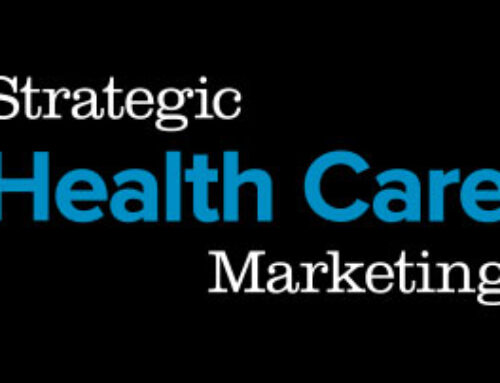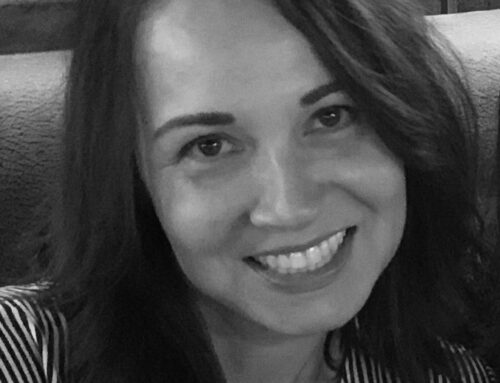January 9, 2024
Trust in the health care system continues to be low, so how do you get people to believe your advertising?
// By Ross K. Goldberg //

Editor’s Note: This article kicks off our Q1 series on Advertising — and what better place to begin than with the ingredient most essential for successful advertising: TRUST.
Those entrusted with communicating clear messages during crises know that such communication is successful only if people believe what is said is true. But the time to build that trust is not when a crisis hits. That’s too late. Trust must be built through years of candid, timely, frequent, and honest communication.
The same can be said about health care advertising, especially when so many of our traditional institutions — from higher education to government to the once purity of sports — are being questioned for their integrity, authenticity, and worth. Day after day, we see another stack of wood being thrown onto the bonfire of mistrust, and sadly, health care is not immune to that escalating blaze.
The good news is that the pandemic gave health care organizations a chance to step up. According to an Ernst & Young study, consumer trust in the health care system increased in 2020 to 51 percent — the highest since 1977. This is encouraging because consumer trust in health care leads to healthier behaviors and better health outcomes.
But here the good news runs dry: Still half of Americans don’t trust the health care system. As reported by Deloitte Insights, that number is particularly high among Blacks, Asians, Hispanics, and Native Americans. Consumer trust in health care providers and institutions has a major impact on public health as trust influences a willingness to get crucial medical care, preventive screenings, and mental health care. Trust between a patient and a health care provider is also linked to improved patient experience and patients’ perception of the care they receive.
As far back as 2006, the American Hospital Association issued a warning on erosion of public trust in health care in a report titled Trust Counts Now. The “Now” from 2006 is still very much the “Now” today.
The U.S. health care advertising market reached $22.4 billion in 2022, including spending on television, print, and social media. That makes it more critical than ever for health care advertisers to acknowledge the importance of trust and try to douse any whiff of mistrust or suspicion before they continue to collectively invest even more billions into messaging that only half of their audience believes to be true.
Just as you can’t go to bed one night and say to yourself, “Tomorrow I am going to start having integrity,” trust is not something that can be obtained overnight or by the flick of a switch. But here are five things health care advertisers can do to help make their messaging more believable.
1. Embrace transparency. Hospitals have a moral duty to be honest and transparent in all their dealings. That means taking time to explain mundane realities of what goes into a hospital bill, including how the government or insurance companies pay the hospital. It means talking about the hospital’s overall quality performance and not just cherry-picking those areas of exceptionalism. It means explaining why a program or service is discontinued and how that impacts the community.
It means responding openly and honestly to social media queries. And it means being candid about data breaches or wrongful deaths, not just because it is required by law but because it is simply the right thing to do.
Consumer trust in health care providers and institutions has a major impact on public health as trust influences a willingness to get crucial medical care, preventive screenings, and mental health care.
2. Be a good corporate citizen. Long before your advertising begins, most people have already formed their opinion of you, perhaps from speaking with friends or by what they’ve seen in the news, or how they are influenced on social media. One of the most effective ways to positively shape those preconceived notions is by positioning your hospital as a valued community member. Being a good corporate citizen means observing strong moral and ethical standards in daily interactions with patients and employees, and involves a host of other actions, including:
- Being visible in the community 365 days a year.
- Hospital leadership volunteering with local organizations where their skill sets can provide value.
- Engaging in philanthropic and charitable activities.
- Implementing environmentally friendly practices.
- Dedicating fiscal and human resources to improve the community’s quality of life.
- Emphasizing diversity, equity, and inclusion by giving opportunities to diverse members of the community.
Being a good corporate citizen also means treating your employees with appreciation. They are part of your community and can be either your greatest ambassadors or your most cynical critics.
3. Focus on customer service. There is an old expression that “good advertising can sell a bad product once,” but ultimately people will be most swayed by their own personal experience. In health care, much of that experience is based not just on the clinical outcomes (which a hospital can’t always fully control) but on areas of customer service that are well within your powers.
Is the room clean? Do nurses respond when called? Did the staff show compassion? Is the food good? Right down to how the hospital smelled. These are often what people talk about with their friends and family after discharge. Exceptional customer service goes a long way toward gaining community confidence, and that translates into trust.
4. Leverage the power of public relations. Public relations, more than advertising, can build your brand, mold public opinion, and engage in effective storytelling while carrying an inherent trust that advertising still strives to achieve. Smart hospital marketers understand this and have learned how to use the power of public relations to provide the underpinning on which an effective and believable advertising campaign can be built.
They know, too, that even the most data-driven, strategically planned, and highly targeted advertising campaigns with sophisticated algorithms can, at best, assure only that you are getting your message in front of the “right” people. But seeing (or hearing) and believing are two different things. Public relations can help bridge that gap.
Noted author, philosopher, and ethicist Sissela Bok once called trust “a precious resource that is easily
squandered and hard to regain.”
5. Let others sing your praise. Retailers have known for years that consumers tend to trust their fellow customers more than the businesses they’re buying from. Real customers are seen as more objective and hold more weight than a company’s canned messaging. Once upon a time, hospitals knew this as well, but all too often today they are seduced by high-priced advertising agencies into thinking that traditional testimonial advertising is passe. Wrong!
Having real patients vouching for your services and telling their heartwarming stories adds a certain legitimacy to your offerings and messaging that no degree of Madison Avenue cuteness can surpass.Borrowing some of your customers’ credibility lets you cultivate enhanced trust with your target audiences and demonstrates that you are committed to providing solutions and not just selling services.
Noted author, philosopher, and ethicist Sissela Bok once called trust “a precious resource that is easily squandered and hard to regain.” That is a warning to us all that trust has an expiration date — and once built, must be sustained day after day, year after year, through a dedicated focus that makes trust a fundamental precept of everything you do. Your health care advertising, regardless of how clever, beautiful, or strategically targeted it might be, can deliver the results you seek only if built on a foundation of trust. As the AHA said 18 years ago: “Trust Counts NOW.”
Ross K. Goldberg is president of Kevin/Ross Public Relations and former chairman of the board of trustees at Los Robles Regional Medical Center in Southern California. He the author of the books I Only Know What I Know and Food on the Table. He is a member of the editorial advisory board of Strategic Health Care Marketing.




